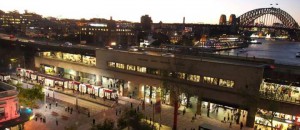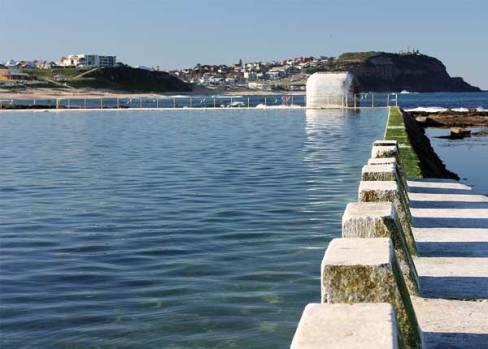
Malcolm Turnbull’s weekend announcement that the Commonwealth will provide $95 million in funding towards the extension of the Gold Coast’s light rail system gives further impetus to the quite remarkable popularity of the technology in Australia.
Trams were once Australia’s most popular form of public transport, operating even in comparatively small cities such as Geelong and Ballarat. Now they are flavour of the month for Australia’s growing band of public transport advocates, the chief of which is our new Prime Minister.
Malcolm Turnbull delights in being seen on public transport, in great contrast to his predecessor, who believed cars made ‘kings’ of ordinary people. It has not taken long for the new Prime Minister’s ideas to see action.
“Public transport infrastructure is absolutely critical to the development of our cities,” he said when announcing the Gold Coast deal, “which are absolutely critical to ensuring our future prosperity as a nation.
“Our cities are the crucibles of innovation and enterprise. They are where so much of our GDP is created and it’s vital that they have the right infrastructure, whether it is telecommunications infrastructure or transport infrastructure.”
Sydney’s CBD has had its buses taken off George St, the city’s main north-south artery, as construction of a massive new light rail line begins. The Gold Coast line has converted many former opponents into light rail enthusiasts.
Light rail in Australia is booming – there is even a major conference on the subject planned for 2016. The are many projects in the offing:
In operation
- Melbourne: Melbourne’s 250km metropolitan tram system rivals St Petersburg as the most extensive light rail system in the world.
- Sydney: From Central Railway to Dulwich Hill, built on old tram tracks and an obsolete goods line, servicing the southern CBD, Darling Harbour, and the Inner West.
- Adelaide: A single 12km line from the CBD to the beachside suborn of Glenelg was retained when Adelaide’s tram network was decommissioned in 1956. It has since been extended to North Terrace and along Port Road to Hindmarsh.
- Gold Coast: The existing G:link line from Griffith University’s Southport campus to Broadbeach was opened in 2014.
Under construction and planned
- Sydney: Major extension of the network, with a new line from Circular Quay down the spine of the CBD along George St, past Central Railway, through Surry Hills and branching at Moore Park into separate lines to Randwick and Kingsford.
- Canberra: Capital Metro announced in early 2015, to run 12km from Gungahlin in the north, down Northbourne Avenue to Civic. Construction planned 2016-19. There is a proposal to extend it along the northern shore of Lake Burley Griffin to Russell.
- Perth: MAX (Metro Area Express), announced by the WA state government but now deferred, with construction planned from 2017 to 2022. The planned route is from Mirabooka in the north to the Perth CBD, with spurs to the University of Western Australia in the south west and Victoria Park in the south east. There are also proposals to eventually extend the line to Fremantle.
- Gold Coast: Extension of existing line north to heavy rail station at Helensvale, to be completed before the Commonwealth Games in 2018.
Proposed
- Adelaide: A number of extensions have been proposed, to Port Adelaide, Adelaide Airport, Semaphore and Mitcham, as well as more tracks in the CBD.
- Hobart: Riverline, a proposed light rail system from the CBD along the southern bank of the Derwent River and perhaps across the river to Bridgewater, has been shelved after the Abbott Government scrapped a feasibility study in 2014. Expect to see it back on the table soon.
- Newcastle: The NSW government closed the heavy rail spur between Hamilton and Newcastle’s CBD in 2014, replacing it with buses. Two options have been proposed for a light rail system – one long the old rail lines, and another on Hunter St. The government is conducting a study, but there has been no announcement.
- Parramatta: The city council has conducted a $1 million feasibility study for a network connecting the CBD with Macquarie Park and Castle Hill, with possible extensions to Bankstown and Olympic Park.
- Sunshine Coast: The council has conducted a feasibility study of a route from Caloundra to Maroochydore, and has talked about an opening date of 2025.
There have also been calls for the introduction of light rail in major regional cities such as Geelong, Townsville and Wollongong.
Trams are not a new idea, but except in Melbourne they have been out of fashion for decades. Now the wheel has turned. Light rail is cool. The Prime Minister again:
“Federal governments over the years have been reluctant to invest in public transport infrastructure. There is a range of reasons for that, but they are essentially historical.
“The reality is that you should assess the merit of infrastructure on its merits and not favour one road over rail or rail over road. As cities become more densely settled, public transport infrastructure is of greater and greater importance.
“So, if you can’t have a roads-only solution, you can’t obviously have a rail-only solution either. It’s just a question of taking a pragmatic, business-like, practical approach to it, no ideology involved. This is just business-like.”
Business wins out over ideology. How Australia is changing.
Comment below to have your say on this story.
If you have a news story or tip-off, get in touch at editorial@governmentnews.com.au.
Sign up to the Government News newsletter

